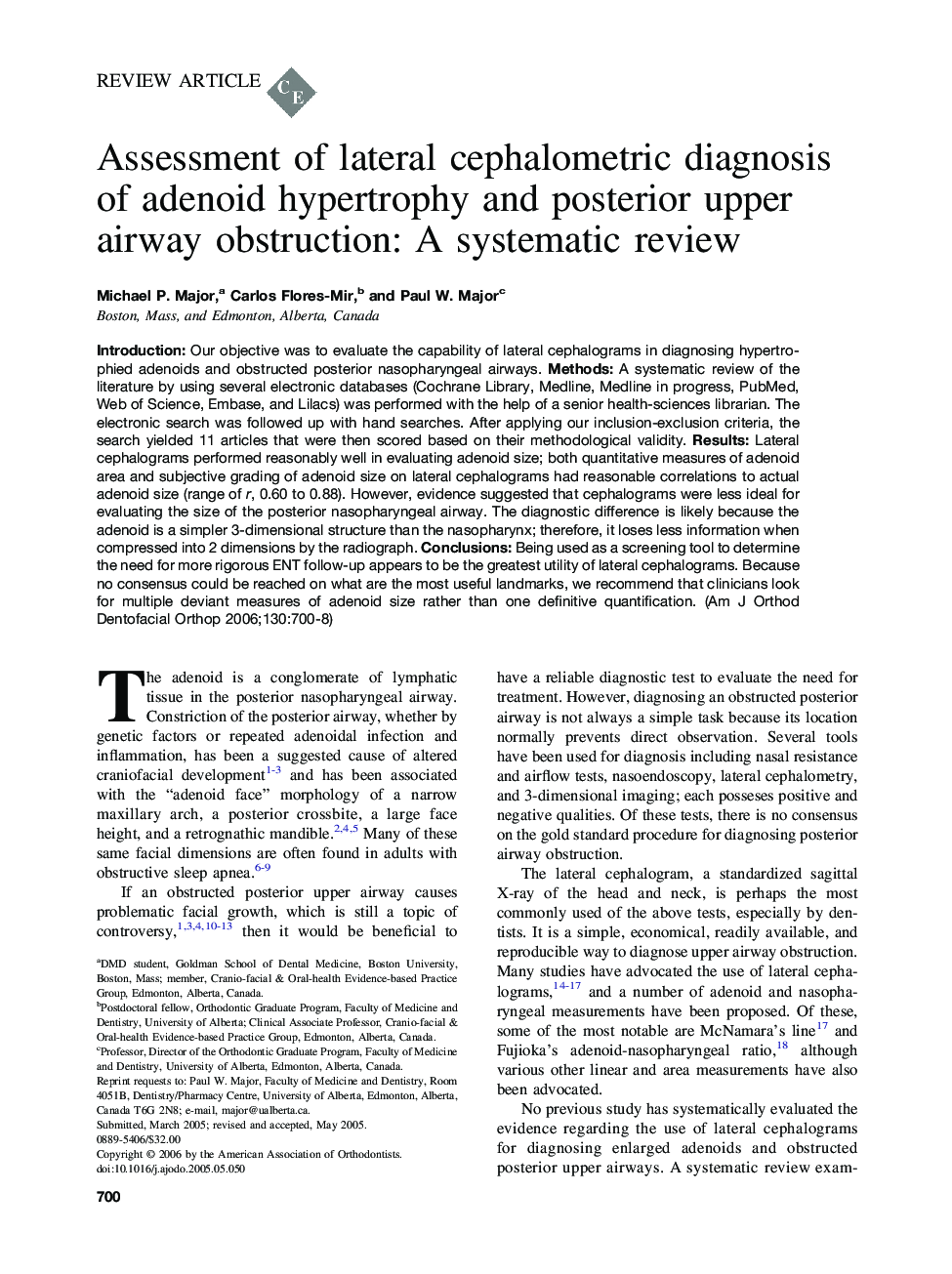| Article ID | Journal | Published Year | Pages | File Type |
|---|---|---|---|---|
| 3119707 | American Journal of Orthodontics and Dentofacial Orthopedics | 2006 | 9 Pages |
Introduction: Our objective was to evaluate the capability of lateral cephalograms in diagnosing hypertrophied adenoids and obstructed posterior nasopharyngeal airways. Methods: A systematic review of the literature by using several electronic databases (Cochrane Library, Medline, Medline in progress, PubMed, Web of Science, Embase, and Lilacs) was performed with the help of a senior health-sciences librarian. The electronic search was followed up with hand searches. After applying our inclusion-exclusion criteria, the search yielded 11 articles that were then scored based on their methodological validity. Results: Lateral cephalograms performed reasonably well in evaluating adenoid size; both quantitative measures of adenoid area and subjective grading of adenoid size on lateral cephalograms had reasonable correlations to actual adenoid size (range of r, 0.60 to 0.88). However, evidence suggested that cephalograms were less ideal for evaluating the size of the posterior nasopharyngeal airway. The diagnostic difference is likely because the adenoid is a simpler 3-dimensional structure than the nasopharynx; therefore, it loses less information when compressed into 2 dimensions by the radiograph. Conclusions: Being used as a screening tool to determine the need for more rigorous ENT follow-up appears to be the greatest utility of lateral cephalograms. Because no consensus could be reached on what are the most useful landmarks, we recommend that clinicians look for multiple deviant measures of adenoid size rather than one definitive quantification.
